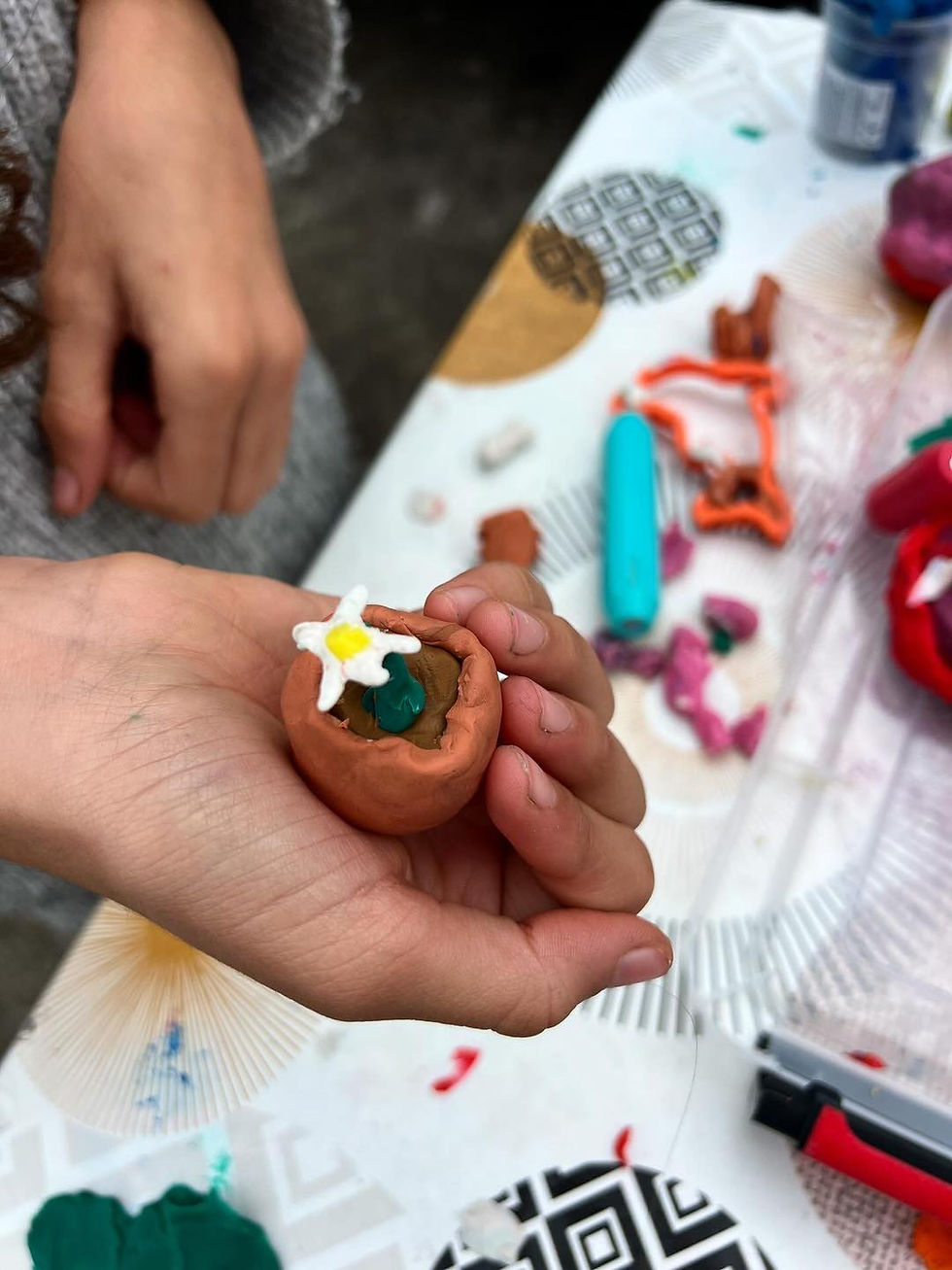Moving Borders
- Art Refuge

- Oct 19, 2018
- 2 min read

Due to circumstances beyond our control we were only able to travel to Calais for today, moving our own borders and giving us a slightly different perspective on this by now familiar place. We were immediately struck by a rise in numbers since our last visit two weeks ago. We also heard that there are nearly 2000 Kurdish refugees in Dunkirk including many families, sleeping in woods with no immediate access to running water.
The air in Calais is getting cooler, roses are in their last bloom in the large municipal border near the Secours Catholique day centre.
DAY CENTRE There was a convivial atmosphere awaiting people, tables grouped together with phone chargers ready, urns of tea and coffee prepared. The place was full with numbers reaching around 100 by mid afternoon. We were impressed by the respectful cooperation of people from various cultures and the sense of the placed feeling safe.
We laid our original large tablecloth map on the table, the first time we’ve used it for several months. We also offered tracing paper and our most detailed Atlas to date. Quickly this new look drew people to the table. Unchartered territories were discovered, a country traced, borders moved, interest aroused, the table busy but in a gentle way. There were doses of playfulness if at times holding a sense of danger, and there was hyper-vigilance.
One young man spent two hours tracing the East coast of America before writing across the bottom: “Wanted Trump – 100,000 dollars”. Trucks were mischievously lined up two by two in a convoy across Europe; plasticine figures were balanced on tops of cars, one held a gun; a skull and cross-bone was modelled onto the front of the large yellow desert truck which forged its journey ahead.
DISTRIBUTION Here the atmosphere in this edge of town place was grounded only by the Medecins du Monde team and their ambulance and psychology van. Numbers were much higher this week, with men from Afghanistan, Iran, Kurdistan, Sudan, Nigeria, Eritrea waiting in small clusters to see the doctor and nurse. They in turn spoke about higher reports of mental distress.
This week we tried using the same tablecloth map on the side of the ambulance in place of our usual map which has become heavily marked with people’s routes. The unfolded surface caught the bright sunshine and allowed us to look at the map with others in this setting in a fresh way. In this challenging place, we were moved by the way some people managed to balance another person’s anger with their own openness and curiosity.



Comments